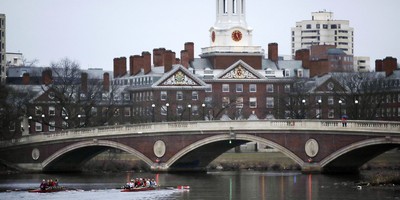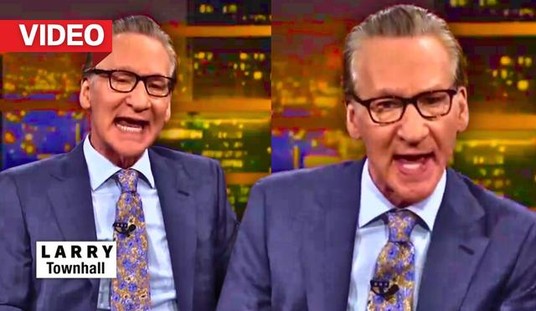By David Malpass and Stephen Moore
In June, President Obama celebrated a rare sliver of good economic news: Foreign investment was up 49% last year over 2009. The president says that this boost in capital shipped to the U.S. by international companies or foreign investors leads to more businesses and higher-paying jobs here at home. He's right.
But this isn't the economic success story that the White House is spinning. The real truth of the recession and limping recovery is that for the first time in decades America is, on net, losing, not attracting, growth capital. That may be the single most important explanation for persistently high unemployment and stagnant wages.
It is true that foreign direct investment rose to $236 billion in 2010 from $159 billion in 2009. But that was still well below the $310 billion invested in 2008. The White House also neglected to disclose that in the first quarter of 2011 foreign investment fell by 51% from the first quarter of last year, according to data released last month from the federal Bureau of Economic Analysis. Foreigners of late have not found the U.S. to be a receptive, high-return home for investment.
Much more worrisome is that Americans are taking their investment dollars abroad at a faster pace than foreigners are bringing capital to these shores. In 2010, for example, U.S. investment abroad was $351 billion—$115 billion higher than foreign investment here. Economic recoveries are periods when investment capital usually surges into a country, but since this weakling rebound began in the middle of 2009 the U.S. has lost more than $200 billion in investment capital. That is the equivalent of about two million jobs that don't exist on these shores and are now located in places like China, Germany and India.
Recommended
This is a recent and dramatic reversal of fortune. Huge net inflows of productive capital into the U.S. in the 1980s and '90s helped finance the 25-year boom in jobs and broad-based prosperity from 1982-2007. Over that period, foreigners invested just over $6 trillion more in the U.S. (in total capital) than Americans invested abroad, according to the Bureau of Economic Analysis, with most of it going into businesses.
That tidal wave of funds provided the capital to finance new American companies, while increasing the value of other assets, such as real estate. It also underwrote new factories owned by foreign companies like Honda. All of this investment contributed mightily to the 35 million new jobs in the 1980s and '90s. By 2008, the average job created with foreign investment paid $71,000 a year, about 30% above the U.S. average, according to a report issued in June by the White House Council of Economic Advisers, "U.S. Inbound Foreign Direct Investment."
So why did the investors put their money in the U.S. in those years? We'd say it was a combination of low tax rates, a strong dollar, low inflation and other free-market reforms. Capital flows to where it is most highly rewarded, and low marginal tax rates on the returns to capital and business income create a gravitational pull on global funds. A strong and stable currency allows businesses to invest in innovation, employees and productivity rather than inflation hedges. It also encourages investors to wait longer to cash in their profits without worrying about the losses of a depreciating dollar. In the high-tax, high-inflation 1970s, the U.S. was a net exporter of risk-taking capital. As we are now.
That's only part of the story behind the disappointing recovery we now face. To be sure, foreigners still park a huge amount of money in this country, but in the last several years they've shifted their investment toward U.S. Treasury securities and government-guaranteed bonds, and away from the private-sector staples—corporate bonds, intellectual property, ownership of businesses—that create sustainable jobs. Since 2009, foreigners have invested just over $1 trillion in U.S. Treasury bonds, according to the Bureau of Economic Analysis.
Some economists argue that investing in low-interest-rate government bonds works fine for America because it allows the government to boost spending on programs—the latest doozies are windmills, high-speed rail and 99 weeks of unemployment benefits. The low interest rates, this argument goes, prove there is no negative "crowding out" from America's near $1.5 trillion deficit.
That misses the point. To produce rapid growth, most capital must be allocated by markets. The effect of $4.5 trillion of borrowing since 2009 is that foreigners and Americans are buying Treasury bills instead of investing in the next Google, Oracle, Wal-Mart or biomedical company. Today, foreigners are financing food stamps and the next bridge to nowhere while Americans are building state-of-the-art production systems abroad. This is the real pernicious "crowding out effect" of the federal government's borrowing.
The free flow of capital across borders is unquestionably a positive sum game for everyone—in the same way free trade is—but the U.S. can only retain its status as a high-wage dynamic economy if we are enticing capital for new operations to these shores. The U.S. is still by far the world leader in the cumulative stock of foreign investment, which now stands at some $3.3 trillion. But the composition of that investment is tilting toward government securities.
Meanwhile, the best related measure of our competitiveness as a nation—the balance of foreign direct investment into the U.S. versus the investment capital going abroad—is a red flag.
Mr. Malpass is president of Encima Global. Mr. Moore is senior economics writer for the Wall Street Journal editorial page.
See also these top features from Townhall Finance:
| The Ticker... | |
| Zacks Investment Research | Increase Odds of a Positive Surprise |
| Bob Beauprez | How Obama Spell Failure? S-T-I-M-U-L-U-S |
| David Malpass | America's Troubling Investment Gap |
| Carrie Schwab Pomerantz | Social Security and Spousal Benefits |
| Mike Shedlock | The Golden Days Are Over |
| Zacks Investment Research | Freeport Mine Workers on Strike |
| John Ransom | Obama's Price: $10 Tax for Union Teachers- You Pay |
Join John Ransom on Facebook and follow him @Twitter
email: thfinance@mail.com

























Join the conversation as a VIP Member